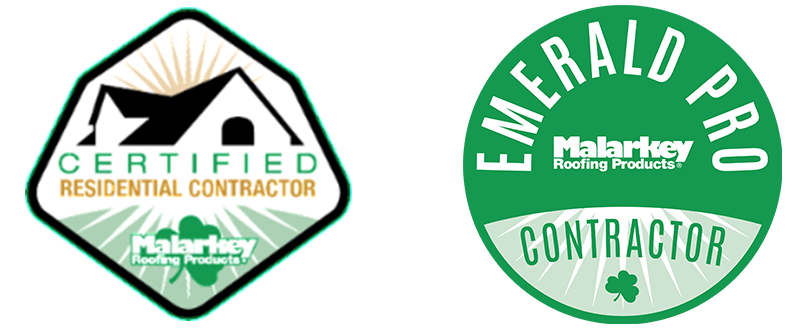EPDM (Rubber) Roofing
What is it and how is it made?
EPDM (ethylene propylene diene terpolymer) is a super durable synthetic rubber roofing material most often used in low-slope buildings. It is primarily made of ethylene and propylene, which are are derived from oil and natural gas. EPDM can be installed fully adhered, mechanically attached or ballasted, to the seams of your roofing system, then sealed with liquid adhesives. The product can be found in black or white. Black EPDM has a smooth surface that can resemble natural gray slate and is surface granules free. White EPDM also has a smooth surface. It is a highly reflective, environmentally friendly surface designed to reduce heat.
Pros:
Durability: EPDM rubber is significantly more puncture resistant than other roofing options. The membrane is a very flexible material, which is useful for buildings that expand or contract over time.
Reliable Formula: The EPDM formula has been around roughly forty years. In that time the formula has remained fairly consistent as no weaknesses or flaws have necessitated a significant formula change.
Cost-Effectiveness: EPDM is the more econimal option in low-slope, flat-roof building materials.
Environmentally Friendly: EPDM is definitely the greener choice. 14 million square feet or roughly 3.5 million pounds of reclaimed EPDM have been recycled in the last 10 years. It is the leading recycled commercial roofing material. The majority of this recycled material is used to make walkway pads for new or existing roofs.
Ease: EPDM is easier to install and patch then heat welded systems.
Cons:
Design limitations: EPDM is only available in black or white with the majority of these roofing systems found in black and white available at a higher premium.
Compromised Durability with Chemical Output: Grease and other chemicals could deteriorate the product over time and require regular upkeep or repair.
Heat: EPDM does not disperse heat well. These systems can create hot environments for rooftop equipment. Therefore it is not well suited to roofs that will house a lot of equipment such as your HVAC equipment.
Seam upkeep: EPDM seams require greater upkeep over time. This is exacerbated by excessive chemical output or grease rising to the roof.
Estimated lifetime:
EPDM installations can last over 40 years, despite exposure to varying climatic conditions such as hail, extremely low temperatures, ultra-violet radiation, and extreme heat or fire. However, chemical or grease exposure will significantly shorten that life-span and increase the need for upkeep and repairs.
In a Nutshell:
EPDM roof systems will perform exceedingly well on any building that doesn’t have excessive chemical output or grease going to the roof, and doesn’t have much equipment on the roof such as HVAC systems. It is also the more environmentally friendly option in low-slope roofing.
Fun Facts:
- EPDM has been manufactured since the 1970’s! Since then more than 20 billion-plus square feet of EPDM have been installed on roofs in the United States.
- An EPDM roofing system can be found in .045 mil to .090 mil thickness. It can be reinforced or unreinforced. Most EPDM roofing systems are black in color, but can be purchased in white for a higher premium.
- EPDM membrane installation can be attached mechanically, adhered, or ballasted.





